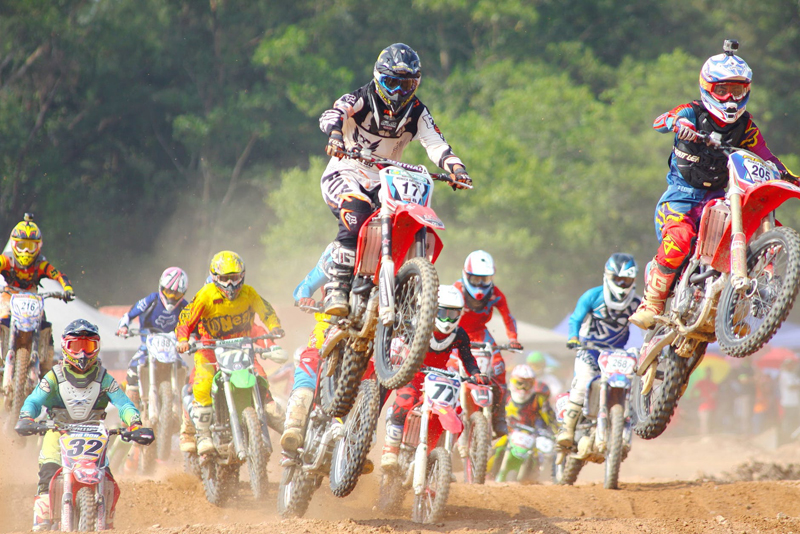History Of F1 - 1970s

In 1970, the revolution of aerodynamic engineering began to take place. It started with the creation of wings, which meant more downforce for the cars. Essentially this meant they had more grip and could coast round corners much faster than previously. In the early days, the wings were not fastened particularly securely, and it wasn’t unheard of for them to fall off at unexpected moments. After a few too many accidents, wings were banned for a short time.
The early 70s saw the rise of a new star for Lotus, Emerson Fittipaldi, a young man from Brazil who won his first race in 1972. The rivalry between he and Jackie Stewart meant that the next four championships were alternated between the two of them, until Stewart retired in 1973. Stewart almost made it to the 100 Grand Prix mark, but gave up one short of the feat.
In 1975, Ferrari began to make their comeback – despite the fact that the season was littered with protests about driver safety. In the Spanish race, a car came off the track and actually hit the crowd, killing four people, causing some drivers to refuse to continue to participate. Ferrari driver Niki Lauda won five races and had nine pole starts to take his first championship. He went on to win two more. The next year, 1976, Lauda was involved in a horrific accident at the Nurburgring, which saw his car burst into flames. Lauda suffered facial burns and inhaled toxic gases, so much that he was not expected to survive, and the hospital were very unhopeful. However, Lauda did manage to pull through and was miraculously driving only six weeks later. The Nurburgring track was taken off the calendar, but returned in a dramatically altered state.
Niki Lauda’s main competition came in the form of James Hunt, a British driver for McLaren. He won the 1976 championship after Lauda withdrew from the last race, it had come as close as that.
In development terms, the cars began to sport air boxes above their heads to increase flows around the engines. Engineers changed their titles to designers, and began to increase their knowledge of aerodynamics. The cars began to take shape in such a way that they would increase their downforce and mean the cars could go much faster. A lot of the drivers at the time were amazed at the effect, saying they felt glued to the road. These developments were called "ground effects."
They were not without their problems though, because the new developments meant the setup of the car was incredibly important. One tiny degree the wrong way would mean the cars were unstable and ultimately not race worthy. F1 became a highly sophisticated balancing act. Eventually, the effects were banned in 1983, to make F1 more about driver skill and less about car setup.
The early 70s saw the rise of a new star for Lotus, Emerson Fittipaldi, a young man from Brazil who won his first race in 1972. The rivalry between he and Jackie Stewart meant that the next four championships were alternated between the two of them, until Stewart retired in 1973. Stewart almost made it to the 100 Grand Prix mark, but gave up one short of the feat.
In 1975, Ferrari began to make their comeback – despite the fact that the season was littered with protests about driver safety. In the Spanish race, a car came off the track and actually hit the crowd, killing four people, causing some drivers to refuse to continue to participate. Ferrari driver Niki Lauda won five races and had nine pole starts to take his first championship. He went on to win two more. The next year, 1976, Lauda was involved in a horrific accident at the Nurburgring, which saw his car burst into flames. Lauda suffered facial burns and inhaled toxic gases, so much that he was not expected to survive, and the hospital were very unhopeful. However, Lauda did manage to pull through and was miraculously driving only six weeks later. The Nurburgring track was taken off the calendar, but returned in a dramatically altered state.
Niki Lauda’s main competition came in the form of James Hunt, a British driver for McLaren. He won the 1976 championship after Lauda withdrew from the last race, it had come as close as that.
In development terms, the cars began to sport air boxes above their heads to increase flows around the engines. Engineers changed their titles to designers, and began to increase their knowledge of aerodynamics. The cars began to take shape in such a way that they would increase their downforce and mean the cars could go much faster. A lot of the drivers at the time were amazed at the effect, saying they felt glued to the road. These developments were called "ground effects."
They were not without their problems though, because the new developments meant the setup of the car was incredibly important. One tiny degree the wrong way would mean the cars were unstable and ultimately not race worthy. F1 became a highly sophisticated balancing act. Eventually, the effects were banned in 1983, to make F1 more about driver skill and less about car setup.
This site needs an editor - click to learn more!
You Should Also Read:
History Of F1 - 1960s
History Of F1 - 1950s
History Of F1 - 1900s to 1940s
Related Articles
Editor's Picks Articles
Top Ten Articles
Previous Features
Site Map
Content copyright © 2023 by Christine Blachford. All rights reserved.
This content was written by Christine Blachford. If you wish to use this content in any manner, you need written permission. Contact
BellaOnline Administration
for details.


